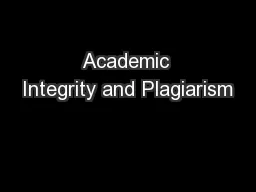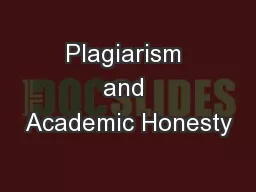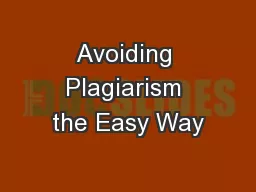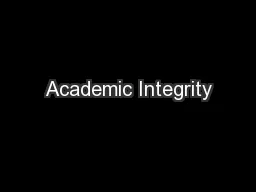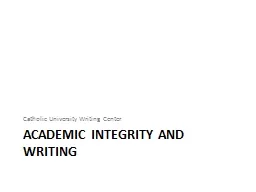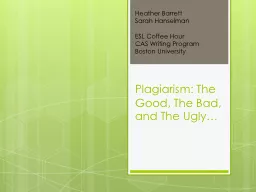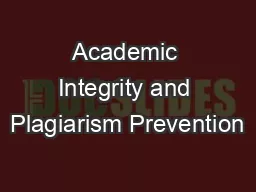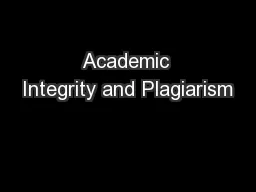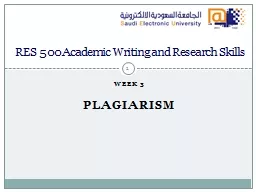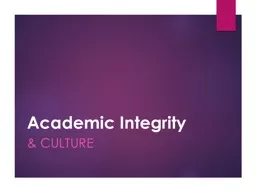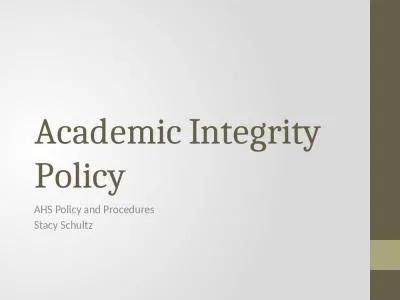PPT-Academic Integrity and Plagiarism
Author : aaron | Published Date : 2018-02-17
Ms Erika Gavillet Dr Richy Hetherington Do you agree to take part Yes No I dont know yet Which of the following professional bodies are you a member of General Medical
Presentation Embed Code
Download Presentation
Download Presentation The PPT/PDF document "Academic Integrity and Plagiarism" is the property of its rightful owner. Permission is granted to download and print the materials on this website for personal, non-commercial use only, and to display it on your personal computer provided you do not modify the materials and that you retain all copyright notices contained in the materials. By downloading content from our website, you accept the terms of this agreement.
Academic Integrity and Plagiarism: Transcript
Download Rules Of Document
"Academic Integrity and Plagiarism"The content belongs to its owner. You may download and print it for personal use, without modification, and keep all copyright notices. By downloading, you agree to these terms.
Related Documents

